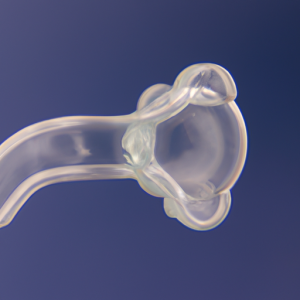Periodontal disease, also known as gum disease, affects millions of people worldwide. It is a serious oral health condition that, if left untreated, can lead to tooth loss and other complications. Fortunately, periodontal surgery has emerged as an effective treatment option for those suffering from this ailment. In this comprehensive guide, we will delve into the various aspects of periodontal surgery, including its diagnosis, treatment, symptoms, and causes. By understanding these key factors, individuals can take proactive steps to prevent and address periodontal disease, ensuring a healthier and happier smile. Additionally, we will explore the latest advancements in periodontal surgery, shedding light on innovative techniques and promising outcomes that are transforming the field. So, let us embark on this journey to gain a deeper understanding of periodontal surgery and its impact on oral health.
1. Understanding Periodontal Surgery: A Comprehensive Guide to Diagnosis and Treatment
Periodontal surgery is a specialized dental procedure that focuses on the diagnosis and treatment of periodontal disease, also known as gum disease. This comprehensive guide aims to provide a deeper understanding of periodontal surgery, including its purpose, diagnosis, treatment options, symptoms, and causes.
Periodontal disease is an inflammatory condition that affects the gums and supporting structures of the teeth. It is primarily caused by the buildup of plaque and tartar on the teeth, which leads to the formation of bacterial colonies. Over time, these bacteria can cause infection and inflammation in the gums, leading to various symptoms and potentially severe consequences if left untreated.
Diagnosing periodontal disease is an essential step in determining the appropriate treatment approach. Dentists typically evaluate the patient’s oral health by conducting a thorough examination, which includes checking for signs such as swollen or bleeding gums, loose teeth, receding gumline, and deep periodontal pockets. X-rays may also be taken to assess the extent of bone loss and the condition of the supporting structures.
Once diagnosed, the next step is to develop a treatment plan tailored to the patient’s specific needs. Non-surgical treatments, such as professional dental cleanings and scaling and root planing, are usually the initial course of action. These procedures aim to remove plaque and tartar buildup, as well as smooth the tooth roots to prevent bacterial reattachment.
However, in more advanced cases or when non-surgical treatments fail to provide satisfactory results, periodontal surgery may be recommended. Periodontal surgery aims to access the affected areas directly and eliminate the infection, restore damaged tissues, and prevent further gum and bone deterioration.
The specific type of periodontal surgery recommended will depend on the severity and location of the disease. Some common procedures include flap surgery, bone grafting, tissue regeneration, and gum grafting. Fl
2. Recognizing the Symptoms and Causes of Periodontal Disease: A Closer Look
Periodontal disease, also known as gum disease, is a prevalent oral health issue that affects millions of people worldwide. It is a chronic inflammatory condition that affects the gums and supporting structures of the teeth. If left untreated, periodontal disease can lead to tooth loss and other severe complications. Hence, recognizing the symptoms and causes of periodontal disease is crucial for early diagnosis and appropriate treatment.
Symptoms of periodontal disease can vary depending on the stage and severity of the condition. In the early stages, individuals may experience symptoms such as swollen or tender gums, gum bleeding during brushing or flossing, and persistent bad breath. As the disease progresses, symptoms may worsen and include receding gums, loose teeth, changes in bite alignment, and the formation of deep pockets between the gums and teeth.
Several factors contribute to the development of periodontal disease. The primary cause is the accumulation of plaque, a sticky film composed of bacteria, food particles, and saliva, that forms on the teeth and gum line. If plaque is not adequately removed through proper oral hygiene practices such as brushing and flossing, it can harden into tartar or calculus, which cannot be removed by brushing alone.
The presence of tartar provides an ideal environment for bacteria to thrive, leading to inflammation and infection of the gums. Additionally, certain risk factors can increase the likelihood of developing periodontal disease. These include poor oral hygiene habits, smoking or tobacco use, hormonal changes (such as during pregnancy or menopause), diabetes, a weakened immune system, genetic predisposition, and certain medications that reduce saliva flow.
It is important to note that periodontal disease is not limited to adults. Adolescents and children can also develop gum disease, particularly if they have poor oral hygiene habits or underlying health conditions that compromise their immune system.
Recognizing the
3. Exploring the Latest Advancements in Periodontal Surgery: Innovative Techniques and Promising Outcomes
In recent years, there have been significant advancements in periodontal surgery that have revolutionized the way we diagnose, treat, and manage gum diseases. These innovative techniques and promising outcomes have provided new hope for patients suffering from periodontal issues.
One of the latest advancements in periodontal surgery is the use of laser therapy. This technique utilizes a laser beam to remove infected gum tissue and to sterilize the affected area. Laser therapy is not only less invasive than traditional surgery but also provides faster healing and minimal discomfort for the patient. It has proven to be highly effective in treating gum diseases such as periodontitis and gingivitis.
Another promising advancement is the use of regenerative techniques. These techniques involve the use of growth factors, specialized proteins, and stem cells to stimulate the growth of new bone and gum tissue. This approach not only repairs the damage caused by gum diseases but also promotes the regeneration of healthy tissue. Regenerative techniques have shown remarkable results in restoring the health and function of the gums, leading to improved overall oral health.
Additionally, the introduction of guided tissue regeneration (GTR) has been a game-changer in periodontal surgery. GTR involves the use of biocompatible membranes or barriers to prevent the growth of unwanted gum tissue while promoting the growth of new bone and connective tissue. This technique has been particularly successful in treating gum recession and restoring the proper alignment of teeth. GTR has significantly improved the success rate of periodontal surgeries and has provided long-lasting results for patients.
Furthermore, the advancements in dental technology have greatly enhanced the precision and accuracy of periodontal surgery. The use of digital imaging, computer-guided surgery, and 3D printing has allowed periodontists to plan and execute surgeries with utmost precision. These technologies enable a more personalized approach to treatment, ensuring that the surgery addresses the specific

